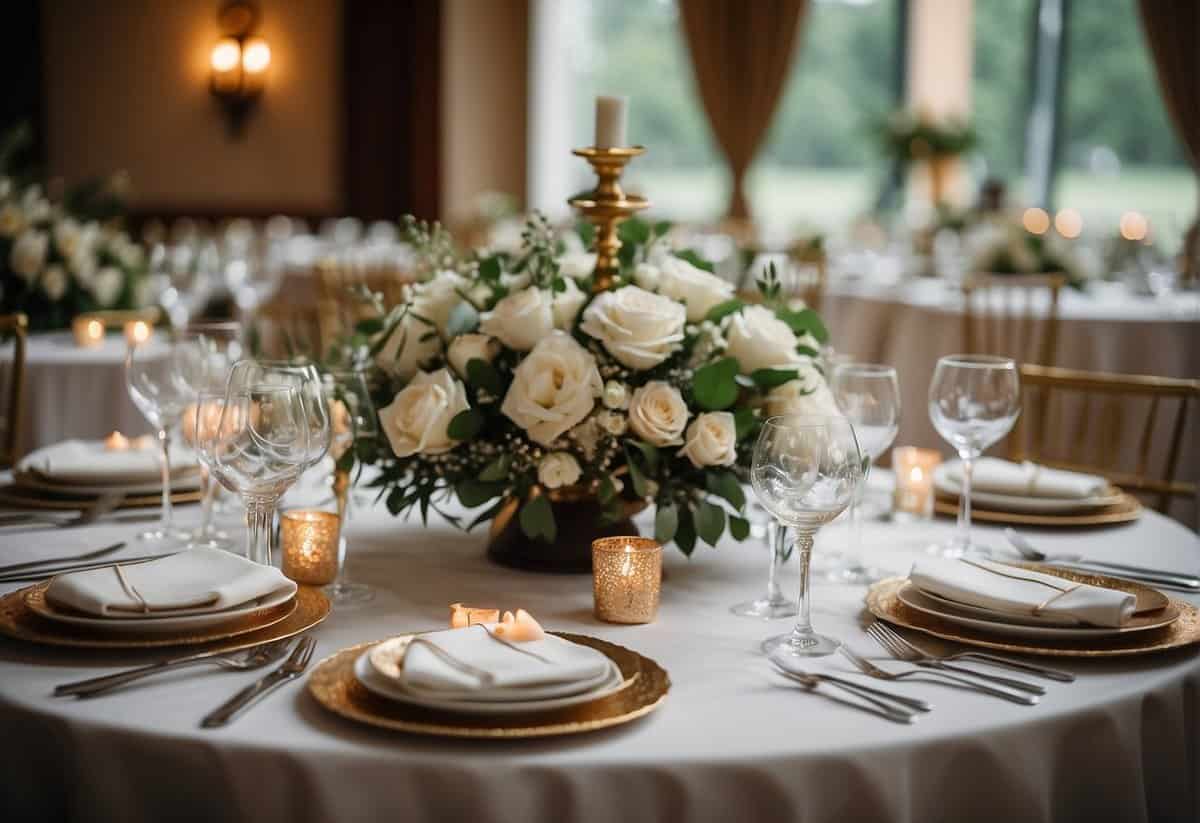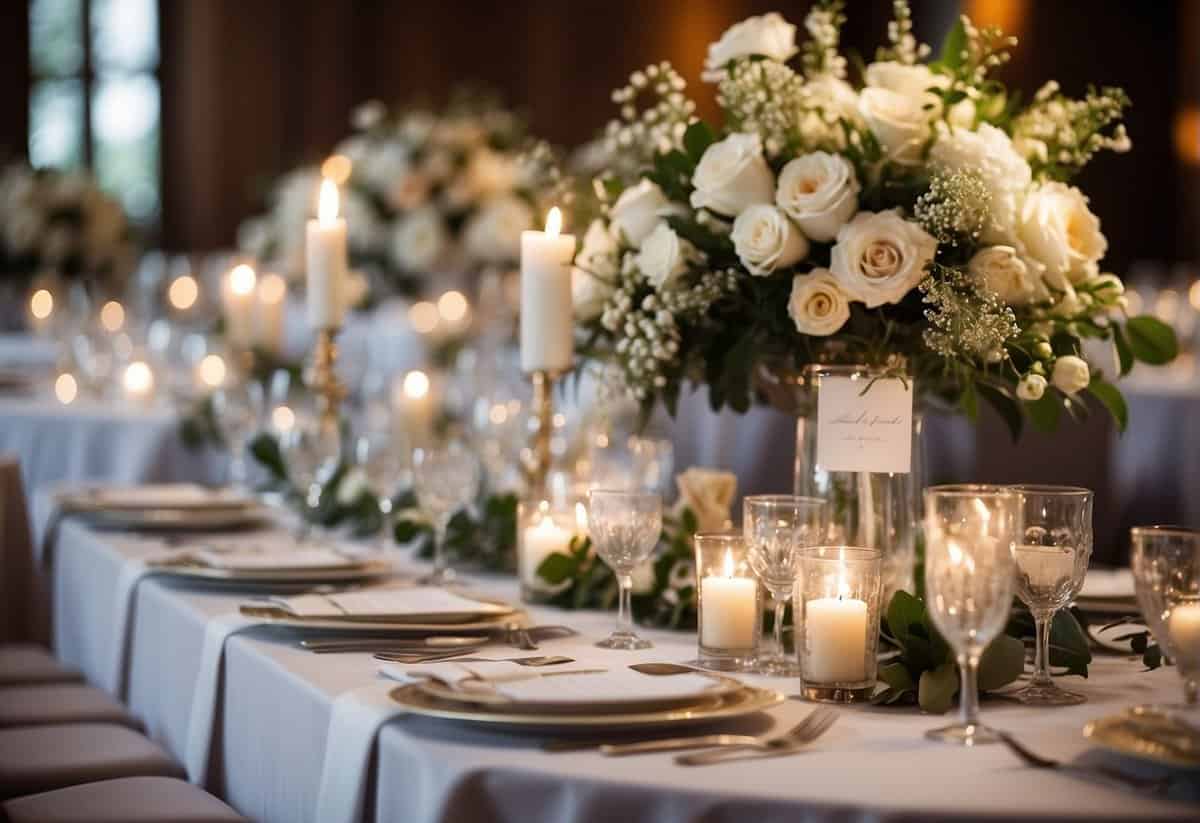How Many Guests Do You Need for a Wedding? Figuring Out the Perfect Number!
Deciding on the number of guests to invite to your wedding is a decision that intertwines joy, love, and practicality. Your wedding is a profound celebration of your relationship, bringing together those you hold dear. Yet, it’s essential to strike a balance that aligns with your vision for the day and reflects the intimate or grand scale you desire for your event. Keep in mind that the size of your guest list will influence various aspects of your wedding, from the venue choice to the overall budget.

Understanding whom to invite requires you to consider the nature of your relationships and the atmosphere you want to create on your special day. Whether you dream of a cozy gathering with close family and friends or a lavish affair with everyone you know, your guest list sets the tone for the festivities. Beyond the emotional factors, practical considerations like venue capacity and catering costs will also play a significant role in shaping your decisions.
Key Takeaways
- Balancing emotional and practical considerations is vital when deciding your wedding guest count.
- Your guest list influences your wedding’s atmosphere, venue choice, and budget.
- Precise planning and understanding relationships help shape a guest list that reflects your wedding vision.
Determining Your Wedding Vision and Size

Making your wedding day as perfect as it should be starts with envisioning the type of ceremony and reception you desire. Consider not only the ambiance but also the number of guests to ensure everyone has a comfortable and memorable experience.
Considering Venue and Guest Comfort
Venue Selection: Your venue sets the stage for your wedding day. It’s essential to choose a location that aligns with your vision while accommodating your expected guest count. Whether you’re dreaming of a rustic barn, a grand ballroom, or a serene outdoor setting, the size and layout contribute to the ease and comfort of your guests.
Guest Comfort: Think about the capacity of your venue and ensure there’s ample space for the ceremony and reception. Your guests’ comfort is paramount, so consider factors like seating availability and space to mingle without feeling overcrowded.
Deciding on a Large or Small Wedding
Average Wedding Size: The average wedding has typically around 117 to 167 guests, but the right number for you will depend on your personal preferences and budget.
Large Wedding Considerations: For those who favour a grand affair, remember that a larger guest list means more complexity in logistics, from seating arrangements to catering. An extensive guest list can create a vibrant atmosphere but requires careful planning to maintain a personal touch.
Small Wedding Benefits: A smaller wedding promises intimacy and the opportunity for meaningful interactions with each of your guests. It often allows for more budget flexibility and can make some venue choices more accessible or practical.
Constructing Your Guest List

Creating a well-considered wedding guest list is a delicate balance between celebrating with those you love and managing the practicalities of event planning. It involves thoughtful inclusion of family and friends while navigating the intricacies of plus-ones and children.
Incorporating Family and Friends
Your immediate family and closest friends take precedence when you start drafting your guest list. Here’s a simple way to categorize:
- Immediate family: Include parents, siblings, and grandparents.
- Extended family: Aunts, uncles, and first cousins.
- Close friends: Those who have been significant in your life.
Remember to consider your fiance’s family members and friends with the same consideration.
Navigating Plus-Ones and Children
Managing plus-ones and children can significantly affect your guest count. Here are strategies to apply:
Plus-Ones: Reserve plus-ones for guests who are married, engaged, or in a long-term relationship. For a nuanced approach, check guidance from The Knot which can offer insight into establishing clear policies.
Children: Decide if you want a child-friendly wedding or if you prefer an adults-only affair. If children are welcome, specify this on the invitation. If not, communicate this politely to your guests with families.
Use this framework to balance your preferences with the need to maintain a manageable guest list and ensure everyone has a memorable time at your wedding.
Budgeting and Invitation Etiquette

When planning your wedding, two of the most critical elements are developing a balanced budget and understanding the subtleties of invitation etiquette. Your wedding budget will dictate how many guests you can invite, while invitation dynamics will influence your final guest count.
Balancing Wedding Costs
Creating a wedding budget is a must to ensure you can cover all your costs without financial strain. You need to allocate funds to various categories, and one of the most significant parts is your invited guests. As a rule of thumb, remember that each guest adds to the overall cost because of catering, seating, and other accommodations. Balancing your budget means making tough decisions about who makes the cut.
When setting your budget, consider the following:
- Venue Capacity: Can it accommodate your ideal guest count?
- Catering Costs: Typically, a major portion of your budget, often based on a per-person cost.
- Additional Expenses: Decor, favors, and invitations can all increase with more guests.
Here’s an example breakdown of how guest count affects catering costs:
| Number of Guests | Price Per Person | Total Catering Cost |
|---|---|---|
| 50 | $100 | $5,000 |
| 100 | $100 | $10,000 |
| 150 | $100 | $15,000 |
Remember, a more intimate wedding can save money, allowing more to be spent on other areas or saved for future plans.
Understanding RSVP and Invitation Dynamics
Managing RSVPs and invitations requires careful consideration to ensure you have an accurate count for your wedding day. It’s important to know how to gauge the expected attendance from the number of invitations you send out. Typically, expect 70-85% of your invited guests to attend, though this number can be influenced by the location and timing of your wedding.
Tips for RSVP and invitation management:
- Send Invitations Early: Give your guests plenty of time to respond.
- Track Responses: Use a system to keep track of who has and hasn’t responded.
- Follow Up: For those who haven’t replied, a gentle reminder is appropriate.
Managing your invites well means you’re more likely to have an accurate headcount to inform your caterers and venue, ensuring a smooth and enjoyable day for everybody involved.
Frequently Asked Questions

When planning your wedding, determining the guest list size is crucial for managing your budget and venue space. These FAQs provide guidance on handling your wedding guest list effectively.
What’s a good rule of thumb for creating a wedding guest list?
To create a balanced wedding guest list, consider your venue’s capacity, your budget, and your personal preferences for the event’s scale. Start with immediate family, close friends, and then extend to relatives and acquaintances as space allows.
How can I estimate the number of guests who will decline my wedding invitation?
Historically, 70% to 85% of invited guests tend to accept the invitation. Keep in mind factors such as travel, health, or prior commitments that might influence your guests’ ability to attend.
What is a typical guest count for a small versus a large wedding?
A small wedding usually consists of 50 to 75 guests, focusing on a more intimate gathering, whereas large weddings may have over 200 guests, creating a grand celebration.
Are there typical percentages of guests who attend versus those who RSVP ‘no’?
Yes, you can typically expect around 70% to 85% of invited guests to attend, with the remainder sending regrets.
What tools or methods are useful for calculating your wedding guest list?
Use online tools like RSVP trackers, wedding apps, or spreadsheets that allow you to anticipate your final guest tally and manage plus-ones and dietary requirements.
How should I determine the right number of guests when planning catering for my wedding?
Consult with your caterer about typical portion sizes and guest appetites. Factor in the time of day and whether you’re serving a full meal or appetizers. Err on the side of extra, as it’s better to have a bit too much food than not enough.
